Register for free and continue reading
Join our growing army of changemakers and get unlimited access to our premium content
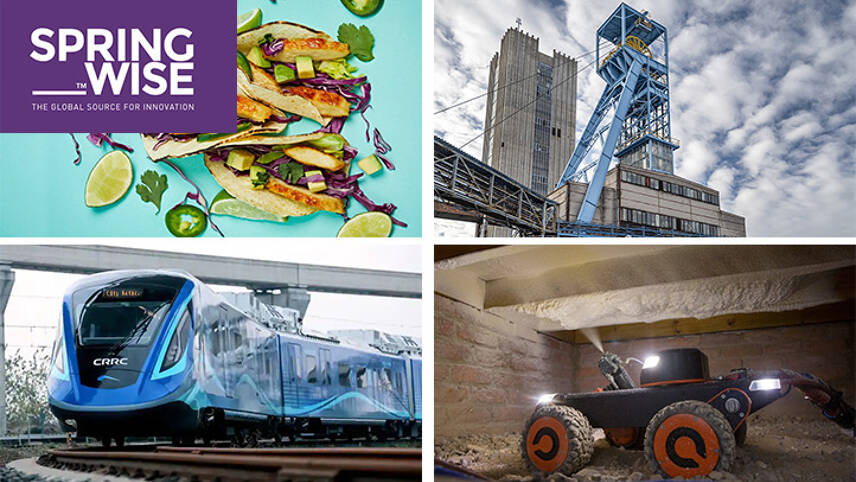
As 2022 came to a close, so did another year of disruption on a global scale. Covid-19 is still a pandemic, with China currently experiencing a serious wave. Russia’s war in Ukraine is continuing to impact energy and food supplies to Europe and beyond. We are expecting 2022 to be confirmed as the warmest year on record for the UK and the fourth warmest globally, with starker heat on the cards for 2023. A global recession now looms.
It is little surprise that Collins Dictionary chose ‘permacrisis’ as its word of the year for 2022. We have seen disruptions that many hoped would be shallow and swift rolling on, including supply chain squeezes, labour market changes and extreme weather.
Those working in sustainability know that many of the solutions to these challenges, with co-benefits for climate, nature and society, already exist. And innovators are already working on systems, projects, processes and items that showcase possible greener futures.
So, what are the next-generation trends and innovations that will impact our lives for good in 2023 and beyond? While keeping one eye on the present, edie has scanned the horizons to identify eight green innovation areas that could be extremely productive in 2023.
This list has been compiled with insight from edie’s innovation partner, Springwise.
Innovative retrofitting solutions
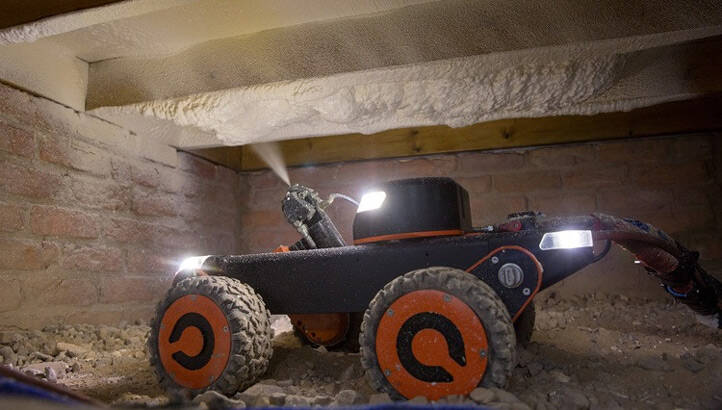
Image: Q Bot
Energy prices in the UK and Europe have been increasing since summer 2021, with the steepest increases felt following Russia’s invasion of Ukraine this February. This has, the International Energy Agency (IEA) has confirmed, spurred increased investments in energy efficiency and renewable generation capacity. But, to keep the heating and lights on in the near-term, European nations have been scrambling for alternative fossil fuel sources and costs have continued to rise.
Improving energy efficiency is a win-win. It has often been stated that the cheapest, lowest-carbon energy is the energy that is not used in the first instance. Energy efficient homes also reduce costs for families and improve the case for installing cleantech like home solar and heat pumps.The UK, the EU and other markets are setting new energy efficiency targets with all of this in mind.
We can expect, therefore, 2023 to be a year of rapid developments for innovations relating to retrofitting. There are digital innovations like Audette, an artificial intelligence (AI) platform that analyses the most efficient way to decarbonise real estate portfolios. This will be rolled out to cities in North America next year. Another means of analysing energy efficiency is using infrared cameras – potentially mounted on drones or even satellites.
There are also physical products that may evolve considerably in terms of performance and upfront cost, including heat recovery systems, domestic energy storage, heat pumps and prefabricated panels. If you don’t think insulation is a particularly eye-catching innovation area, perhaps look into underfloor insulation robots like those from Q-Bot, which have already completed more than 2,000 installations in the UK.
Low-carbon industrial materials

Pictured: ‘HempCrete’
Buildings are responsible for 39% of global energy-related carbon emissions, according to the World Green Building Council. The majority of these emissions are operational, but materials and construction are also significant, accounting for about a third of the total.
The UN estimates that raw resource use for construction will double by 2060 on a business-as-usual trajectory. Steel, concrete and cement are already major contributors to global emissions, so this presents a challenge to climate targets, presenting the need for innovative low-carbon materials.
edie and Springwise have covered many a story relating to low-carbon innovation in industrial materials sectors. We’ve observed Cemex’s work to pilot solar-powered clinker manufacturing; the evolution of H2 Green Steel’s renewable hydrogen heat for steelmaking and the cement industry’s joint push for carbon capture.
With businesses now convening through the Climate Group to scale low-carbon steel and concrete procurement, we can expect more innovation in 2023.
Next-generation alternative proteins

Image: Upside Foods
Springwise is predicting a big year for proteins in 2023. A few years ago, we saw many stories on proteins for plastics recycling. Now, the focus seems to be firmly on food systems.
As we closed off 2022, technology columns in national and international news outlets featured several popular stories about 3D-printed and lab-grown proteins for human an animal consumption. The Financial Times covered a string of reviews of lab-grown meat products by food authorities in the US and Singapore, including Upside Meat’s lab-grown chicken fillet. This side of the pond, the BBC ran an interview with London-based Good Dog food, which is aiming to launch products in the near future.
These stories built on from attention on Opalia Foods, a Canadian biotech firm producing dairy milk without using cows. It does this by genetically engineering and growing mammary cells.
Another dairy innovation comes from Miruku in New Zealand, which is working to produce dairy proteins from plant cells before the end of 2023.
The environmental benefits of these innovations range from reduced deforestation in producing animal feed from soy, to reducing runoff at farms which pollutes rivers.
Satellites for nature
2022 closed out with nations agreeing on a new international UN treaty to conserve and restore biodiversity this decade. After the previous Aichi targets went unmet, pressure is on to follow top-line pledges with real-world action. Nations will need to collaborate with non-state actors to track and stop actions which destroy forests and pollute nature, and to scale up nature restoration projects.
Satellites, Springwise predicts, will become increasingly prevalent for applications such as monitoring deforestation and reforestation. It has highlighted CTrees as a case study. This US-based company uses a combination of high-resolution satellite imagery, AI, and LiDAR to map trees and is aiming to bring its system to market this year. Elsewhere, German startup Constllr has ambitious plans to use micro-satellites to monitor water availability around the world. Systems using satellites for nature monitoring do already exist, but we can expect them to become more advanced in the near future.
Hydrogen trains
Hydrogen has certainly been a hot topic for sustainability professionals this past year. With nations committed, through the Breakthrough Agenda, to bringing low-carbon hydrogen to cost parity with fossil (grey) hydrogen this decade, the direction of travel for scaling production is set. Debate, now, rages around the best use-cases for this hydrogen.
A report from IRENA this time last yearv concluded that hydrogen should be prioritised in hard-to-electrify sectors such as steelmaking, shipping and transporting heavy vehicles over long distances. MPs on the Science and Technology Committee issued a similar conclusion last month, cautioning against the use of hydrogen for home heating and cars.
One use-case for hydrogen that is progressing rapidly is rail. The world’s first hydrogen passenger train entered service in Hamburg, Germany, in August 2022. Then, assembly of a new high-speed urban hydrogen train was completed in Xinjin, China, in December. The train is powered by a combination of hydrogen fuel cells and supercapacitators and can travel 600km on a single charge. Modelled after existing ‘Fuxing’ high-speed trains, it has a maximum speed of 160 kmph. We can expect the first passenger journeys to be completed within 18 months.
The UK is also developing its own landmark mainline-approved hydrogen train, HydroFLEX. Porterbrook and the University of Birmingham showcased the train at COP26 following initial tests. ScotRail is also exploring hydrogen-retrofitted trains but has not yet confirmed mainline tests.
Modular and 3D-printed homes
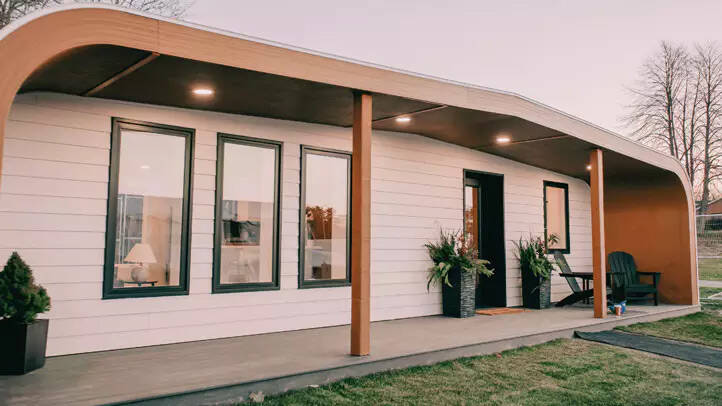
Image: The University of Maine – Advanced Structures and Composite Center (ASCC)
We’ve discussed the importance of retrofitting existing buildings, but future-proofing new buildings is also likely to be a fruitful innovation area, with population growth, urbanisation and the need to meet sustainable development aims on quality housing in mind. The UN estimates that 68% of the global population will live in urban areas by 2050, up from 55% today.
Springwise has been tracking a variety of construction innovations which could make housebuilding more efficient and lower-carbon this year, as well as design innovations for ensuring that homes are low-impact in operation while improving resident wellbeing.
edie and Springwise’s innovation roundup for December 2022 spotlighted 3D printing experts WASP, who have created a home for four adults that is completely self-sufficient in terms of energy and water. The ‘Itaca’ homes are built using local soil. Their manufactured walls contain ventilation chambers and use rice husk thermal insulation materials for passive heating and cooling. Rainwater harvesting also provides irrigation and drinking water for the home and solar panels and battery storage provide the power.
Also included in that roundup was the University of Maine’s ‘BioHome3D’ prototype, 3D printed using recycled forest products. The prototype is being montiroed this winter to assess performance in cold weather.
Lithium-free energy storage
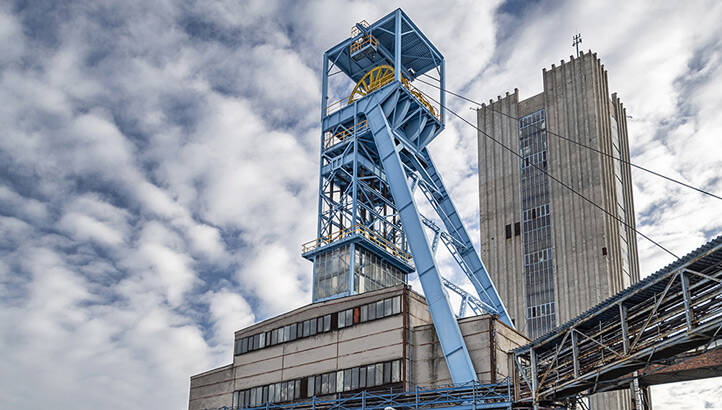
Image: Gravitricity
April 2022 saw a study from KU Leuven, Belgium, concluding that there is simply not enough lithium in the world for the global energy system to reach net-zero by 2050. The conclusion was that the transition could require up to 35 times more lithium annually than is used today.
Fossil fuel industry representatives have used this finding to, predictably, push back against the energy transition. But innovators are hard at work developing and refining next-generation energy storage systems that could avoid strain on global lithium supplies.
The range of technologies in the pipeline is broad, ranging from Gravitricity’s gravity-based system that is being piloted in India, to sand-based heat storage ‘batteries’ in operation in Finland. For smaller-scale applications of energy storage, sodium-based batteries offer a promising alternative to lithium-ion. Other innovators are looking at replacing graphite in lithium-ion batteries with silicon to improve longevity and lightweight the batteries.
Urban renewable energy generation
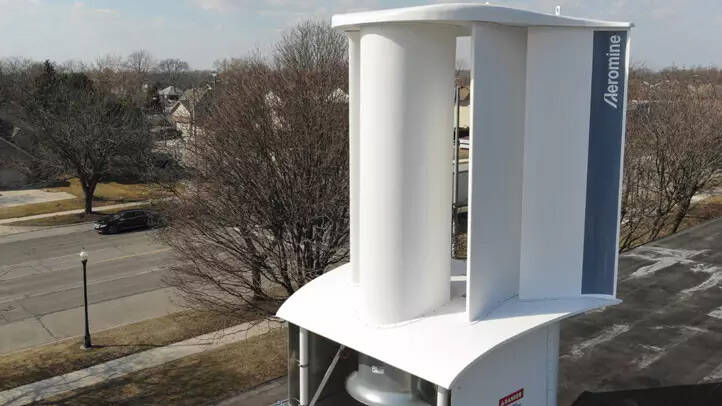
Image: Aeromine technologies
We’ve already spoken about urbanisation and the energy transition in this feature – and the fact that these megatrends are evolving in tandem is prompting innovators to think about how renewable energy generation arrays can be fitted in built-up areas.
Aeromine Technologies, for example, has created bladeless turbines that can be mounted on large buildings with flat roofs. The turbines can be directly connected to a building’s electrical system and are designed to be silent during use. Aeromine typically installs 20 to 40 turbines on the side of a building’s roof that receives the most consistent wind.
Another example of innovation in urban renewables is Filia Solar and Power Roll’s solar film, which can be attached to external roller blinds, providing solar arrays for any home.
Springwise is the global innovation intelligence platform for positive and sustainable change. With a growing database of 11,000+ innovations, we are the place of record for innovation that matters. Springwise.com.

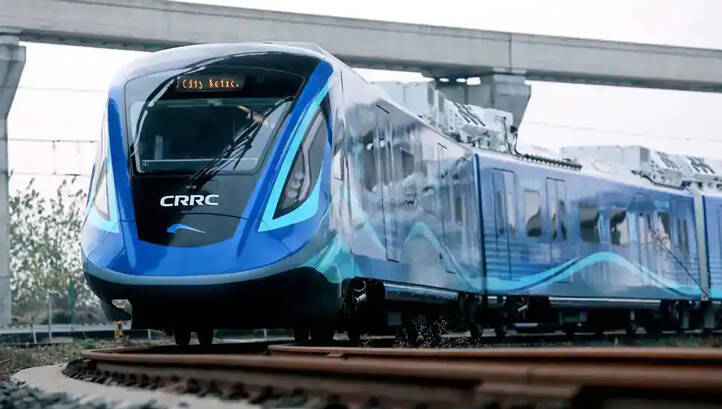


Please login or Register to leave a comment.